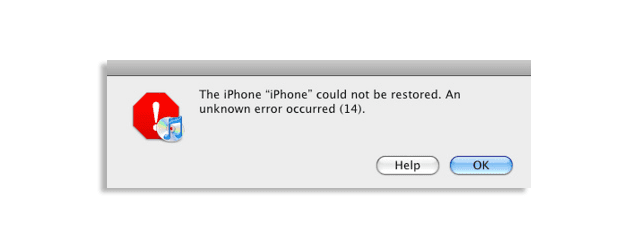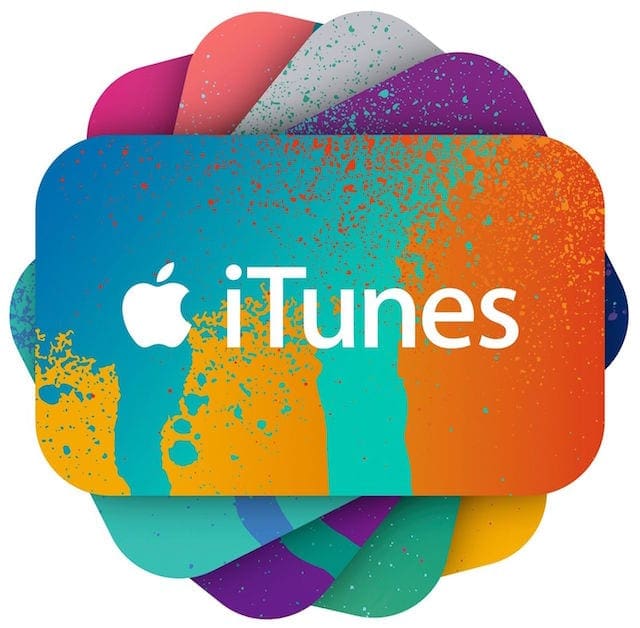iTunes is a great option when you upgrade to the latest iOS. However, sometimes you run into errors such as iTunes error 14 during your upgrade or a restore. This error is, fortunately, easily solved with few steps!
If during your upgrade process, you encounter a notification saying, “This iPhone could not be restored. An unknown error occurred (14),” we have a couple of solutions for you.
According to Apple, this particular error is most commonly caused by issues with your USB cable. Additionally, our readers report that iTunes error 14 is often caused by a faulty firmware update file. So check your device’s USB connection, the USB (Lightning) cable, and your computer’s or power strip’s USB port for any obstructions.

Contents
Why does my device get error 14?
You see error 14 when restoring or upgrading your iOS with iTunes. There are several different reasons for this error, including:
- USB cable failing or problems
- Using an old version of iTunes
- Firmware errors or corruption
- Low storage or memory on your device
- Unstable network connections
iTunes Error 14 Caused by Lightning USB Cable
Make sure you use Made For iPhone/iPad/iPod cables and charging devices. ![]()
Look for the Made for iPod, Made for iPhone, and Made for iPad logos on your products. This logo ensures that the accessory was designed to connect specifically to iPod, iPhone, or iPad and that it is certified to meet Apple performance standards.
To diagnose if an issue exists with your USB cable, try the following steps, and check if the error occurs again.
- Use the original Apple Lightning USB cable that accompanied your iDevice
- For computers, don’t plug into a USB port on your keyboard–plug directly into the computer
- Try a different USB port on your computer
- Use a different Lightning USB cable if available
- Test your Lightning USB cable on another computer

Update to the Latest iTunes Version
If you still get iTunes error 14, verify that you have the latest update of iTunes.
- Open iTunes and see if it prompts you to update to a new version
- Follow the steps and update to the latest iTunes software
Try connecting your device again and see if that worked for you.
Error 14 can mean that your device’s memory is full. Try restoring your device via iTunes instead of updating it. If it doesn’t work at first, press the Option Key (Mac) or Shift Key (Windows) and then select Restore.
iTunes Error 14 Caused by Unsuccessful Firmware File
If iTunes isn’t recognizing the IPSW file or an update isn’t working, deleting the IPSW file from your computer forces iTunes to download a new IPSW file the next time you try to update.
In some cases, the upgrade file for your device was not successfully downloaded. If so, this may be causing the error 14. When a restore issue is specific to a user, it’s likely due to an unusable .ipsw file. iTunes uses these IPSW files to restore your device.
If you are getting iTunes error 14, those IPSW files may be unusable. So try deleting them, renaming them, or moving the file to a different directory.
Removing the IPSW file causes iTunes to download a new copy of the IPSW.
IPSW files on Macs
An easy way to find the ipsw file location on your Mac is with Finder
- Tap open Finder in your dock and hold down the Option key
- Select Go from the Top Menu

- Choose Library
- If you don’t hold down the Option key, you won’t see the Library option
- Open the Library’s iTunes folder
- Look for a folder called iPhone/iPad/iPod Software Updates
Manually locate your Mac’s IPSW file
- iPhone /Library/iTunes/iPhone Software Updates
- iPad /Library/iTunes/iPad Software Updates
- iPod touch /Library/iTunes/iPod Software Updates
Note: The tilde “ ” represents your Home directory.
If you can’t see your user library, follow these steps to show it. 
To locate the IPSW file on Windows depends on which Windows version, username, and the iOS hardware you use
We suggest you open Windows File Explorer, type “*.ipsw” into the search field, and make sure you are searching your whole PC.
Then find and delete those iOS update files in iTunes in .ipsw format. Or perform a search for .IPSW files in your /Users directory if you have more than 1 user account.
IPSW files on Windows 8-10
- \Users\USERNAME\AppData\Roaming\Apple Computer\iTunes\
Note: To quickly access the AppData folder, click Start, type %appdata% in the search bar, and press the Return key. Windows 8: Move the cursor to the upper right, click the magnifying glass, type %appdata%, and press the Return key.
IPSW files on Windows Vista and 7
- \Users\username\AppData\Roaming\Apple Computer\iTunes\iPhone (iPad or iPod) Software Updates
Note: To quickly access the AppData folder, click Start, type %appdata% in the search bar, and press the Return key
IPSW files on Windows XP
- Documents and Settings/[username]/Application Data/Apple Computer/iTunes/iPhone (iPad or iPod) Software Updates
Note: To quickly access the Application Data folder, choose Start > Run. Type %appdata% and click OK.
Follow these steps once you delete or move the .ipsw file:
- Close iTunes on your computer
- Now open iTunes again on your computer
- Check that you deleted the .ipsw (iOS upgrade file) file by going to System Drive> User> Your Username> App Data> Apple Com> iTunes> iPhone Software Updates–delete anything there if needed
- If connecting your iPad or iPad follow the same path but after entering iTunes folder go to iPad Software Updates or iPod Software Updates
- Restore and Upgrade your iDevice by following iTunes prompts
You should no longer get iTunes error 14. Your iPhone or iPad should successfully restore and upgrade to the latest iOS.
Manually select the IPSW file in iTunes
If you tried deleting the ipsw file and it failed, let’s instead manually choice which IPSW file you want iTunes to use.
- For Macs, hold down Option Key
- In Windows, press the Shift Key
- Press the Restore button
- Select the IPSW file you want to install
If removing the .ipsw file didn’t resolve your restore issue, then the issue is probably caused by another user-specific setting. This includes any third party security software settings and your iTunes preferences.

Where to get IPSW files for my iPhone, iPad, and iPod Touch
Apple releases the latest IPSW files in iTunes. So if you want the newest iOS, just use iTunes.
But if your device uses older versions, find these outdated IPSW downloads at websites such as this one.
iTunes Error Caused by Third Party Security Software
If none of the solutions above solve the error, check to see if any third party security software might cause the problem. Third party security software often prevents Apple iDevices to restore, upgrade, or back up by not allowing connections to Apple servers.
So try and temporarily deactivate any third party security software and check if iTunes error 14 error stops allowing your iDevice to upgrade or restore.
Summary
Using iTunes to upgrade to the latest iOS is good practice. However, if difficulties persist, try and upgrade via WiFi. Ensure you have an excellent WiFi connection and check that your iDevice’s battery has at least 50% power. If less than 50% charged, connect your iPhone, iPad, or other iDevice to a power source and start the upgrade. With a fast and reliable WiFi connection, your upgrade is seamless and fast.